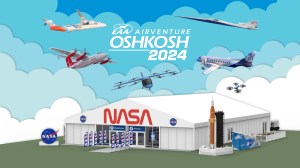
We’ve long held dreams of what the future of air travel could look like.
Something out of the Jetson’s TV show or a Star Wars movie is generally the “go to” vision for most people: aircraft of all types and sizes – including those without pilots onboard – safely flying anywhere at all altitudes anytime for many different reasons.
But there’s more to it than that. It’s a future that could include a distributed digital backbone to seamlessly integrate innovation and tradition in aeronautics, expanding the idea of what commercial air travel looks like while enabling it to grow safely and sustainably.
Now, thanks to technology developed by NASA Aeronautics and its research partners during the past decade or so, more of those dreams than ever before are nearly ready to be turned into reality.

So, the big question is: what’s next?
While personal flying cars might sound like the next best thing since sliced bread, it may not be a product that industry is ready to offer for any number of reasons – but maybe it is? Perhaps wildfire management or emergency medical transport aircraft could come first? Or smaller package delivery drones? There are all kinds of possibilities.
But even more importantly, what additional research and development will be required to fully realize those selected dreams? How soon do we need to begin that work and what technology still needs to be perfected?
To answer those questions, NASA is looking for expert counsel from anyone and everyone with a stake in what the future of air travel should look like by mid-century. Their input will help define that future vision – a vision we are calling “Sky for All.”
“‘Sky for All’ is all about that articulation of where we want to be during the mid-21st century and what we need to do to get there,” said Shawn Engelland, NASA’s lead for “Sky for All.”
“Sky for All” will include some specific examples of what the future will look like, but it’s not meant to provide a concept of operations for some large-scale air transportation system. Nor is “Sky for All” the name of a specific research program or project.
The idea is that information compiled for “Sky for All” will be able to guide decisions on where NASA should invest its research resources during the coming years.
This information also will help the Federal Aviation Administration make its research investment decisions as it pursues a similar effort known as “Charting Aviation’s Future: Operations in an Info-Centric National Airspace System (NAS).”
While the FAA’s effort is focused on a sooner 2035 timeframe, “Sky for All” seeks to describe what air travel will look like beyond 2035 in the mid-21st century.
“It’s important that we collaborate on this vision we’re developing for the mid-century NAS and understand how the NAS needs to transform in order to enable operations that are flexible, sustainable, secure, and connected,” said Kurt Swieringa, NASA’s deputy manager for technology of the Air Traffic Management – eXploration project.
The centerpiece of this collaboration with industry, academia, and other government agencies is a publicly accessible website in which the “Sky for All” vision is explained in much more detail, and input is invited on nearly every page.
In fact, since the website went live late last year to an initial round of invited stakeholders, the aviation community has continued to provide inputs that result in changes to the ever-evolving vision.
“This input is very important to us. We realized from the outset that listening to our stakeholders was going to be the best way for us to get to where we want to go with this vision,” Engelland said.
Two upcoming online gatherings will provide more information about “Sky for All” to anyone who is interested – especially those who might want to offer input and contribute to the future vision for aviation that will guide NASA’s research during the next three decades or so.
The first is imaginAviation, a free three-day virtual event that will be held March 1-3, 2022. Many of NASA’s aeronautical innovators will present updates on the programs and projects they are working on. “Sky for All” will be featured as well. For more information and to register, click here.
The second is a free webinar dedicated to the “Sky for All” vision. The online event will be held March 28, 2022. For more information about the webinar and to register, click here.

































